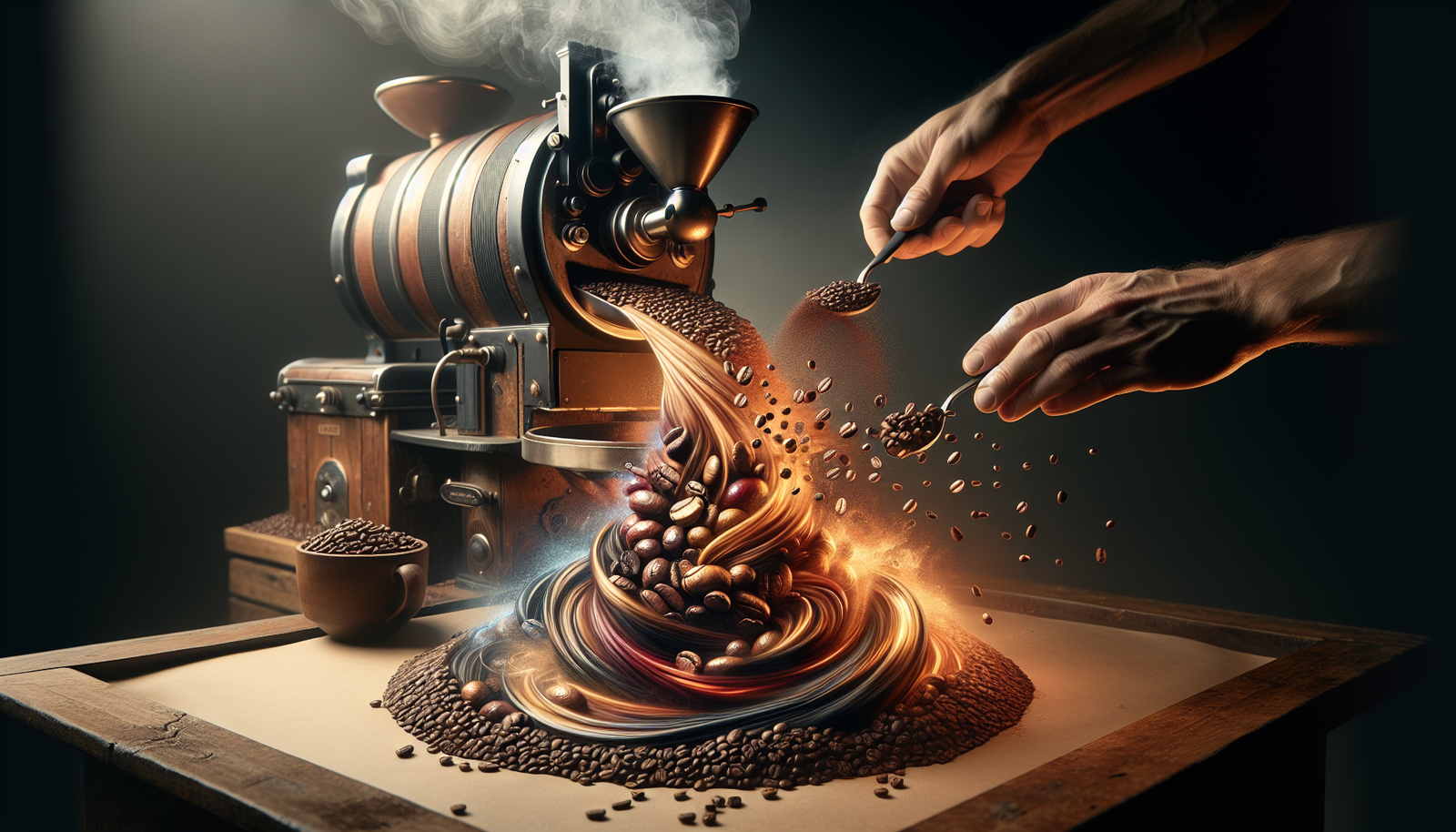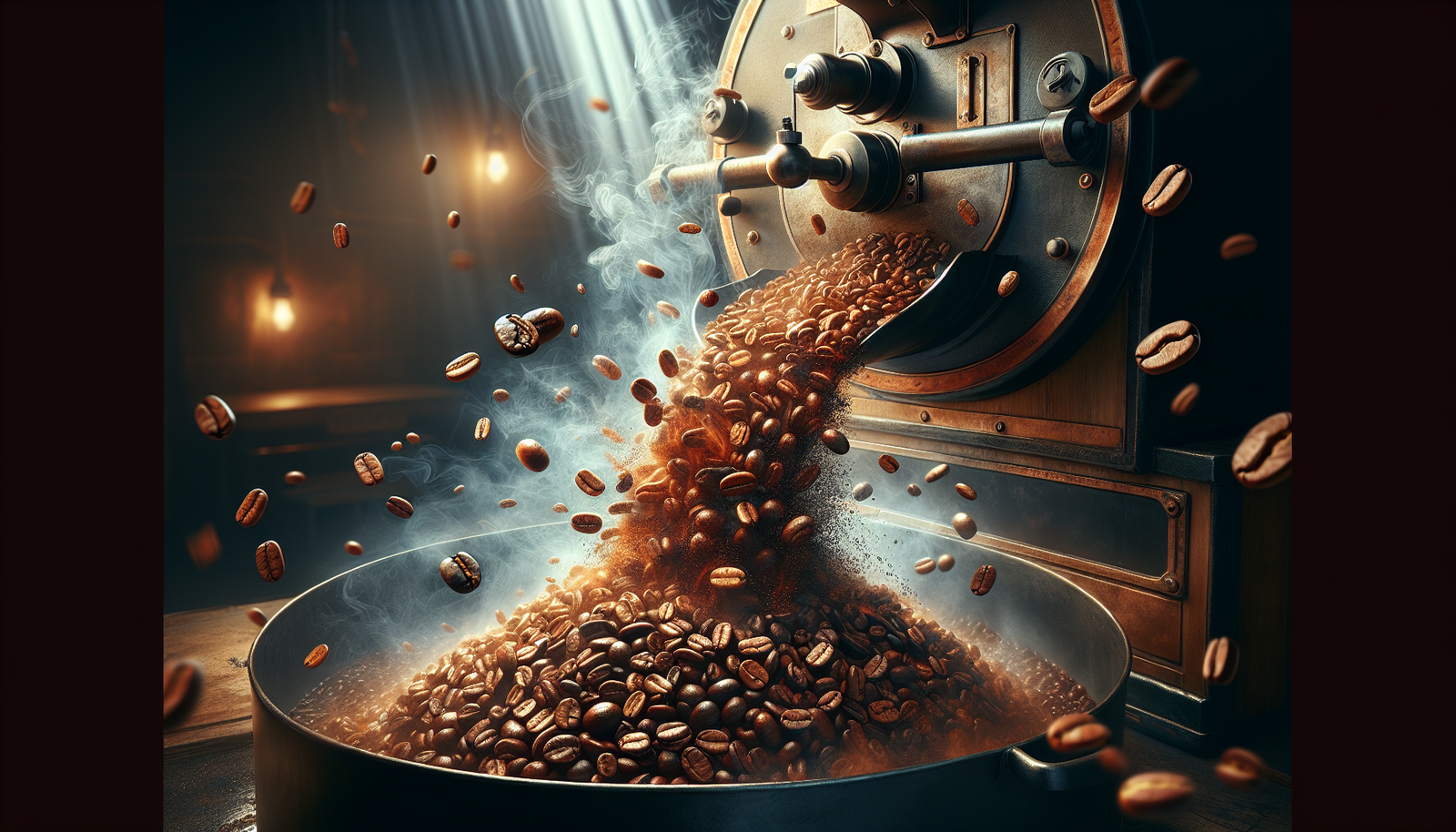Specialty Coffee Roasting
Imagine the nuanced art of roasting a coffee bean until it perfectly encapsulates the rich, aromatic flavors of its origin—an art that embraces both sensory skills and scientific precision. In the world where every detail matters, the world of ‘Specialty Coffee Roasting’ breathes life into ordinary beans, making them into something extraordinary. This finesse-filled process of transformation is but one star in a vast constellation of artisanal crafts and obscure pursuits, promising deeper appreciation and unique experiences which span from ‘Artisanal Pencil Sharpening’ to ‘Vintage Typewriter Repair’ and ‘Edible Insect Cuisine’. Each craft, much like a specialty coffee roast, offers a sensorial journey into lesser-explored yet deeply gratifying world that awaits your discovery and participation.

Understanding Specialty Coffee
Definition of Specialty Coffee
When you hear the term “specialty coffee,” what comes to mind? You might think about a fancy espresso drink with frothy milk or a steeply-priced latte. However, in the coffee industry, “specialty coffee” is a term used to describe coffees that have scored 80 points or above on a 100 point scale by a certified coffee taster or trained sensory panel. These coffees are grown in ideal climates and are distinctive because of their full cup taste and little to no defects.
Difference between Specialty and Commercial Coffee
You probably wonder, what sets specialty coffee apart from the regular, commercial coffee? Well, commercial or “commodity” coffees—those we typically see in grocery stores or in fast-food chains—are produced in bulk. They often compromise on quality to meet volume demands.These coffees often provide a basic taste, lacking the distinctive qualities and flavors found in specialty coffees. On the other hand, specialty coffees comprise the top 20% of the Arabica coffee market. They are carefully harvested and meticulously processed to enhance unique flavors and minimize the defects.
Significance of Coffee Quality
Why does coffee quality matter? If you’re a coffee aficionado, good quality coffee can take your coffee experience to another level. Essentially, the higher the coffee quality, the lower the number of defects and the better the taste. Above all, the high-quality coffee includes considerations for environmental and worker conditions. Much of the best coffees are sustainably sourced and ethical meaning good for farmers, the environment, and for you!
Origins of Coffee Beans
Types of Coffee Beans
When we talk about coffee beans, there are two main types you should know: Arabica and Robusta. Arabica beans are known for their sweet, fruity taste and high acidity. This is the bean of choice for specialty coffee. Then you have Robusta beans, which are usually cheaper to produce, have twice the amount of caffeine, and a stronger, harsher taste.
Coffee Growing Regions
Coffee beans are grown in more than 50 countries around the world, including some you might not expect. Many beans are grown in places called ‘The Coffee Belt’ that lies along the equator, including countries from Latin America, Africa, and Asia. Each of these regions produces a distinctive bean, thanks to the local growing conditions that contribute to the coffee’s unique flavor attributes.
Effects of Terroir on Coffee Quality
You may wonder, does location really matter in coffee? Yes! In the coffee world, ‘terroir’—a term borrowed from wine vocabulary—refers to the impact of weather, soil type, altitude, and other environmental factors on the taste of the coffee. So, the same coffee varietal can taste drastically different when grown in different places.
The Art of Coffee Roasting
Brief History of Coffee Roasting
Coffee roasting is an art that traces back hundreds of years, with the earliest methods involving simple pans over a fire. As the coffee craze grew, so too the methods, with the invention of more sophisticated roasting machines in 17th-century Europe.
Role of Roasting in Coffee Flavor
Roasting plays a significant role in dictating how coffee will taste. Green, unroasted coffee beans are essentially spongy and tasteless. It’s the roasting process that brings out the aromatic oils and flavors that we associate with coffee. The roasting process can bring out various notes, from chocolate, berry or nutty, depending on the desired flavor profile.
The Role of the Roastmaster
Not everyone can make amazing coffee. Becoming a Roastmaster requires years of experience and the development of an intuitive sense for how roasts are developing. They possess the knowledge to understand how changes in temperature and roasting time affect the taste of coffee, ensuring the final product is a masterpiece in every cup.

Processes in Coffee Roasting
Green Bean Selection
Before roasting, comes the process of green coffee selection. This involves finding and choosing the highest quality beans. Roasting a specialty-grade coffee starts with beans that have been meticulously sorted to ensure a uniform and clean taste.
Pre-Roasting Preparation
Once the beans are selected, the preparation for roasting begins. The beans are weighed according to the roasting machine size and roast profile. Careful calibration of the roaster is necessary to ensure it’s at the right temperature when the beans enter.
The Roasting Cycle
The lifecycle of coffee roasting is a fine balance. It starts with a drying phase where moisture content is reduced. Next is the browning stage, which ignites the Maillard reaction, a chemical process that creates the deep flavors and aromas we love. The final stage is called development time, where the beans are roasted until they reach the desired level.
Different Levels of Coffee Roast
Light Roast
Light roast coffees are a favorite among specialty coffee lovers. Roasted just until what’s known refers to the first crack stage, these beans are light brown, with no oil on the surface. These coffees are usually more acidic, and their flavor profiles are bright and complex.
Medium Roast
Medium roast, often known as ‘city roast,’ are medium brown with a stronger flavor and non-oily surface. Medium roasts offer a good balance of acidity and a fuller body, bringing out different flavors locked in the coffee.
Dark Roast
From Full City to Italian, the dark roasts present deeper, often bittersweet flavors reminiscent of dark chocolate or toasted nuts. The beans have a shiny, oily appearance and the taste is often fuller bodied with low acidity.
Determining Roast Level
Determining the roast level is a skill that requires experience. It’s usually determined by the roast master by considering factors like bean’s internal temperature, time, color, and aroma. Advanced roasters also employ automated software profiles to reach the target roast level.
Roasting Methods
Drum Roasting
Drum roasting is the traditional method and is often associated with specialty coffees. The beans roast slowly in a rotating drum over either direct or indirect heat, resulting in a rich and complex flavor profile.
Air Roasting
Air roasting, or hot air roasting, utilizes a stream of hot air to roast the beans. The method ensures even heat distribution and allows for precise control over the roast. This results in a clean, bright cup.
Whirley Pop
A Whirley Pop is a stovetop popcorn popper that can also be used for small-batch coffee roasting at home. It’s a fun way to achieve hands-on roasting control but needs careful monitoring to avoid over or under-roasting.
Home Roasting Techniques
If you’re trying coffee roasting at home, you can start by using your oven or stovetop popcorn maker. However, keep in mind that it’s challenging to achieve the consistent temperatures necessary for a specialty-grade roast.
Specialty Coffee Roasting Equipment
Commercial Roasters
Commercial roasters vary by size and automation level. From traditional drum roasters to sophisticated machines with cutting-edge technology that allows for precise control and consistency.
Home Roasting Equipment
For the home roaster, options include everything from modified popcorn poppers to small-scale replicas of commercial roasters. Some coffee lovers even use cast-iron pans on the stove.
Maintenance and Upkeep of Roasting Equipment
Proper upkeep and maintenance of roasting equipment are important to ensure optimal performance and longevity. This includes regular cleaning to avoid the accumulation of coffee residue.
The Science Behind Coffee Roasting
The Chemistry of Coffee Roasting
The process of roasting is essentially a complex sequence of chemical reactions. Green coffee beans are made up of proteins, sugars, and acids, and the magic really starts to happen when these compounds interact with heat.
Understanding the Maillard Reaction
The Maillard Reaction is a chemical reaction between amino acids and reducing sugars that gives browned food its desirable flavor. It’s named after French chemist, Louis Camille Maillard, who first described it in 1912. In coffee roasting, it’s the Maillard reaction that provides the distinctive flavors and aromas
Coffee Degassing: Why It Matters
After roasting, coffee beans undergo a process of degassing where they release carbon dioxide. While ideally, you’d wait at least 24 hours after roasting before brewing to allow the coffee to degas, when you can’t wait that long, it’s not uncommon to brew coffee shortly after roasting.
Achieving Consistency in Specialty Coffee Roasting
Importance of Roast Profiles
A roast profile refers to the temperature and time at which a coffee is roasted. Maintaining the consistency of the roast profile is essential for producing a consistent flavor from batch to batch.
Sensory Evaluation Techniques
Sensory evaluation, or cupping, is a technique used to evaluate a coffee’s quality. This involves rolling the coffee around your mouth and letting it hit all your taste buds to taste the full spectrum of flavors.
Roasting to Highlight Specific Tastes
Different roasting techniques can be used to bring out specific flavors in coffee beans. Light roasts often emphasize the beans’ inherent characteristics, while medium and dark roasts can highlight chocolate and nutty flavors.
Sustainable and Ethical Aspects of Specialty Coffee Roasting
Environmental Impact of Coffee Roasting
Climate change is a threat to coffee production. As a result, specialty coffee industry is increasingly prioritizing sustainability. Strategies include energy-efficient roasting technologies to reduce CO2 emissions, and buying beans from farms that use sustainable farming practices.
Fair Trade and Organic Coffees
Fair Trade and organic credentials have become increasingly important to coffee drinkers. These certifications ensure the beans are grown using sustainable farming methods and the farmers receive a fair wage for their beans.
Waste Management and Recycling in Coffee Roasting
Dealing with waste is another ethical consideration in coffee roasting. This includes the reuse of coffee chaff—the skin that comes off the coffee beans during roasting—and the recycling of coffee packaging. Lots of coffee roasters are now also using compostable bags.
So you see, specialty coffee roasting is an art, a science, and a passion. It’s a world that offers infinite flavors, discoveries, and fulfillment to all those willing to explore, one cup at a time.

